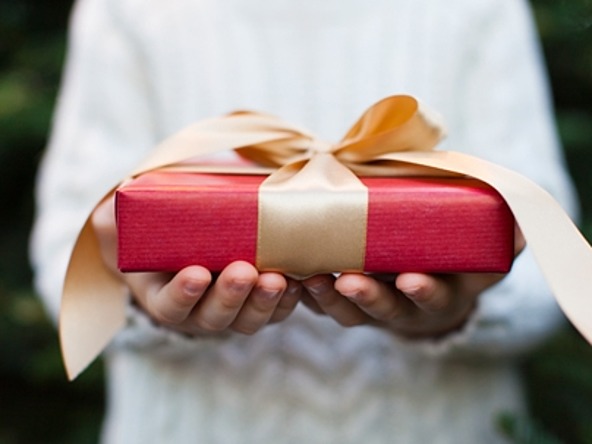What will festive spending look like for younger consumers?

Last year, hopes for post-pandemic all-out ‘revenge spending’ and blow out festivities over the holidays were scuppered by financial worries for many. It meant that the festive season looked very different on opposite sides of the economic divide. And now with a cost of living crisis, a supply-chain crisis, and a new phase of the pandemic, people’s approach to indulgence and celebration in 2022 looks especially precarious.
In March this year, nearly two in five Britons said they were worried about money, according to the Covid Social Study – higher than it was at any point during the pandemic. With inflation still rising, the soaring costs of basics like energy and food are adding to people’s financial anxiety – and while it’s true that those who were already struggling will continue to bear the brunt, financial pressures are being felt by the middle too. In the UK, more than half of households are projected to be in fuel poverty by 2023.
This is especially true for young people. While some are trying or forced to cut back, others are taking a ‘you only live once’ approach (in the US, 45% of people aged 18-35 ‘don’t see a point in saving until things return to normal’ but another study found that half of Americans are seeking out more discounts and promotions to offset inflation).
The cost of living has even overtaken climate change and health worries as the top concern for Gen Y and Gen Z around the world, according to Deloitte. Unfortunately for those who are struggling, research shows that retail therapy is less therapeutic when you’re financially constrained. Consumer finance and decision-making specialist Rodrigo Dias told Canvas8: “The more financially constrained you feel, the less happiness you get from spending. The ‘opportunity cost-consideration’ becomes more pronounced.” This means that people struggling to make ends meet are hyper-aware of all the other things they could (or should) have spent money on and don’t get the joy and escapism from treating themselves that they might otherwise have had. So, a straightforward ‘treat yourself’ narrative doesn't work. Instead, shoppers will be looking for the satisfying feeling of finding ‘value’.
So what will value look like for holiday shoppers who don’t want to feel like they’ve compromised Christmas? We know that across the board, people are more conscious than ever of their impact on the planet and the festive season will be no exception. From unwanted presents and uneaten leftovers to discarded Christmas trees, the holidays have always generated huge amounts of waste. As people seek ways to cut costs, it makes sense that unnecessary – and environmentally unfriendly – festivities are the first to get a rethink. Twitter found that 70% of its UK users intended to reduce the amount of waste they produced around Christmas 2021.
Additionally, as consumer anthropologist Andrea Richeson told us, “inflation certainly hits the brakes on a lot of impulse buys” but it’s not removing the desire (or need) for shopping altogether so instead, “shoppers will increasingly look for alternatives – second-hand, trade, do-it-yourself options, and dupes.”
Charity shopping has seen a boom in the last year, and this is reflected in a shift in attitudes around used items. Two-thirds of people are happy to receive a second-hand gift, rising to 72% among younger consumers (according to ThredUp research). As younger generations embrace and even livestream resale and reuse, secondhand gifts are being seen less as a trade-off, and more as a way to thoughtfully treasure hunt for something ultra-personal. Thrifting for gifts combines the joy of the hunt with the satisfaction of doing something positive for the environment.
Meanwhile, flexible buying options are on the rise – but these can be a mixed blessing. The cost of living crisis has seen consumer confidence plummet to record lows as people look for ways to continue to shop. In the US, Canvas8 found that 60% of people say they are likely to use a financing service like Buy Now Pay Later in the future. As Apple unveils BNPL and the likes of Klarna report record growth, it seems likely that flexible buying will continue to trend over Christmas for those who can’t cut back any further.
Beyond gifting, financial uncertainty is going to make it necessary for people to get creative with how they celebrate. Hungry to make up for missed moments of joy, they’ve learnt to be more flexible and creative with their celebrations. According to a report from Pinterest, an increasing number of people are throwing “micro-parties” which give people an opportunity to celebrate little moments in low-key ways. Younger people in particular are balancing indulgence and inflation through the aesthetics of hedonism. While PayPal reports that three-quarters of Gen Z are rethinking their spending habits because of the cost of living crisis, both saving and socialising are still in their top four priorities, whereas eating out and shopping have become less important.
From dopamine dressing and Y2K-style party girl beauty to funky design and maximalist aesthetics, Gen Z are embracing the freedom and fun of excess and hedonism, through their visual identity, Canvas8 has found. This is reflected in their festive celebrations: 41% of Gen Z and 36% of Gen Y plan to do more to decorate in excess, for example. After enduring pandemic lockdowns, it’s heartening to know that people aren’t ready to ditch party season altogether.
James Fox is head of data and analytics at Canvas8

We hope you enjoyed this article.
Research Live is published by MRS.
The Market Research Society (MRS) exists to promote and protect the research sector, showcasing how research delivers impact for businesses and government.
Members of MRS enjoy many benefits including tailoured policy guidance, discounts on training and conferences, and access to member-only content.
For example, there's an archive of winning case studies from over a decade of MRS Awards.
Find out more about the benefits of joining MRS here.












0 Comments